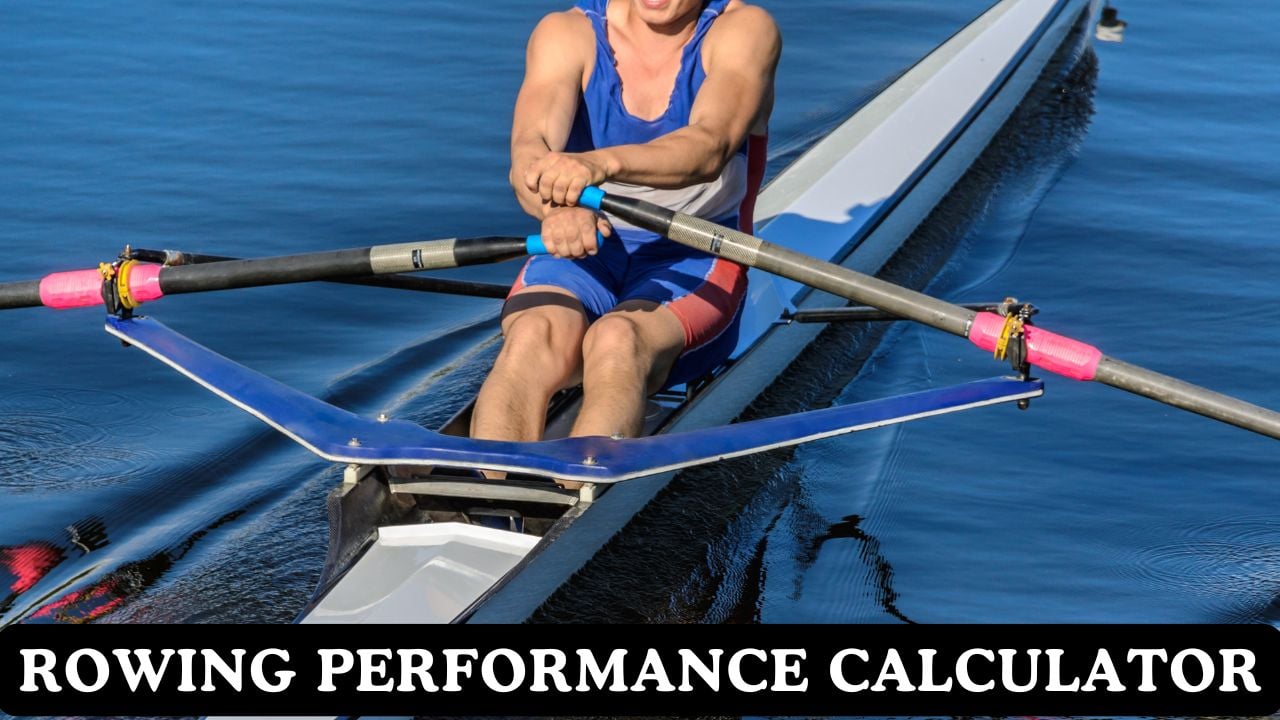🚣 Rowing Performance Calculator
Calculate your rowing power, predict race times, and analyze performance with scientific precision

Complete Guide to Rowing Performance Analysis
Our advanced rowing calculator provides comprehensive performance analysis using scientifically validated formulas. Get instant calculations for: Power Output (Watts based on Concept2 standards), VO2 Max estimation (cardiovascular fitness), 500m Split Time (rowing pace standard), Calorie Expenditure (session and hourly burn rates), Age-Group Rankings (percentile comparisons), and Performance Standards (beginner to elite classifications). Additionally, compare your results against comprehensive standards tables covering ages 15-65 across 6 performance levels. Learn more about fitness benefits and exercise to systematically improve your rowing performance.
💡 Quick Performance Reference
⚡ Power Output & Split Time Standards
Power output (measured in watts) represents the mechanical force applied during rowing, calculated using the official Concept2 formula. Your 500m split time is the universal rowing pace standard – the time to row 500 meters at your current intensity. World Championship standards: Elite males average 1:15-1:20 splits (400+W), elite females 1:35-1:40 splits (280+W). Club level rowers: Males 1:45-2:00 (200-300W), Females 2:05-2:20 (150-220W). Recreational rowers: Males 2:10-2:30 (120-200W), Females 2:30-2:50 (90-150W). Strong leg muscles contribute 60% of rowing power – the drive phase generates most force through leg extension.
🫁 VO2 Max & Aerobic Capacity Standards
VO2 max represents maximum oxygen consumption (ml/kg/min) – the gold standard for cardiovascular fitness measurement.
Elite rowers: Males 65-75+ ml/kg/min, Females 55-65+ ml/kg/min.
National level: Males 55-65, Females 45-55.
Club rowers: Males 45-55, Females 35-45.
Recreational fitness: Males 35-45, Females 25-35.
Sedentary individuals: Males 25-35, Females 20-30.
Our calculator estimates VO2 max using the power-to-bodyweight relationship: stronger rowers with lower body weight achieve higher values.
Research shows rowing can improve VO2 max by 15-25% within 12 weeks of consistent training. Combine rowing with core strengthening exercises to improve oxygen utilization efficiency and power transfer through the kinetic chain.
🎯 VO2 Max Improvement Timeline
Weeks 5-8: Additional 8-12% (cardiac output increases)
Weeks 9-12: Additional 5-8% (mitochondrial density improves)
Beyond 12 weeks: 2-3% monthly with progressive training
Scientific Formulas & Calculation Methods
Our calculator uses scientifically validated formulas to analyze your rowing performance:
Power Output Formula
Power calculation uses the official Concept2 formula: Power = 2.8 / (split_time/500)³. This formula was developed through extensive testing and research with rowing ergometers. Research shows that power output is the strongest predictor of rowing performance across all distances and skill levels.
VO2 Max Estimation
VO2 max estimation uses the relationship between power output and body weight: VO2 = (Power × 10.8) / bodyweight + 35. This formula is based on exercise physiology research specific to rowing movements. Studies in sports science confirm the strong correlation between rowing power and aerobic capacity measurements.
International Performance Standards & Age Adjustments
Our comprehensive standards database incorporates data from World Rowing Championships, Olympic Games, Masters Rowing competitions, and longitudinal training studies spanning 15+ years. Age-adjustment algorithms account for the natural 1-2% annual decline in VO2 max after age 25, while recognizing that technique improvements can offset some performance loss. Performance peaks: Sprint events (500m-1000m) typically peak at ages 22-28, while endurance events (2000m+) peak at 28-32. Masters categories: A-aged (27-35), B-aged (36-42), C-aged (43-49), etc., with separate standards for each division. World Rowing standards and peer-reviewed research validate our classification system for accurate goal setting across all age groups.
Using Your Results for Better Training
🎯 Precision Training Zones & Split Targets
Scientific training zone prescription based on your best 500m split time creates optimal adaptation stimulus.
Zone 1 (Recovery): +25-30 seconds, 60-70% HRmax, 45-90 minutes – builds aerobic base.
Zone 2 (Aerobic): +18-25 seconds, 70-80% HRmax, 20-60 minutes – improves fat oxidation.
Zone 3 (Threshold): +8-15 seconds, 80-88% HRmax, 8-40 minutes – lactate steady state.
Zone 4 (VO2max): +0-8 seconds, 88-95% HRmax, 3-12 minutes – maximal oxygen uptake.
Zone 5 (Neuromuscular): Best split or faster, 95%+ HRmax, 30s-3min – power & speed.
Monitor power output alongside heart rate for dual-feedback precision.
Check out muscle recovery techniques to optimize training adaptations and prevent overreaching syndrome.
Tracking Progress Over Time
Test yourself every 4-6 weeks using the same distance to track improvements. Look for increases in power output, decreases in split times, and improvements in your performance level ranking. Small improvements (2-3 seconds faster 500m split) represent significant fitness gains. Keep a training log to see how different workouts affect your performance. Supplement your rowing with back strengthening exercises to improve your pulling power and prevent injury.
Race Strategy and Goal Setting
Use the race predictions to set realistic goals for different distances. For 2000m races (standard competitive distance), aim to negative split – start slightly slower than your target pace and finish faster. For 500m sprints, go out fast but save energy for a strong finish. The calorie burn information helps with fueling strategies for longer races. Your performance level shows you which competitions might be appropriate for your current fitness. Develop your core strength to maintain proper rowing posture throughout longer races.
Distance-Specific Performance & Training Strategies
🏁 Rowing Distance Analysis & Optimal Pacing
🧠 Race Strategy by Distance
Middle (1000-2000m): Rate 32-38 strokes/min, build through middle 1000m
Distance (5000m+): Rate 26-32 strokes/min, conserve early, finish strong
⚕️ Important Notes
This rowing calculator provides estimates based on scientific formulas and should be used for educational and training guidance purposes. Individual performance can vary due to factors like technique, training history, genetics, and equipment. Always warm up properly before intense rowing sessions and consult with a coach or healthcare professional before starting a new training program, especially if you have any health conditions or injuries. Results are most accurate when you maintain consistent effort throughout your test distance.
